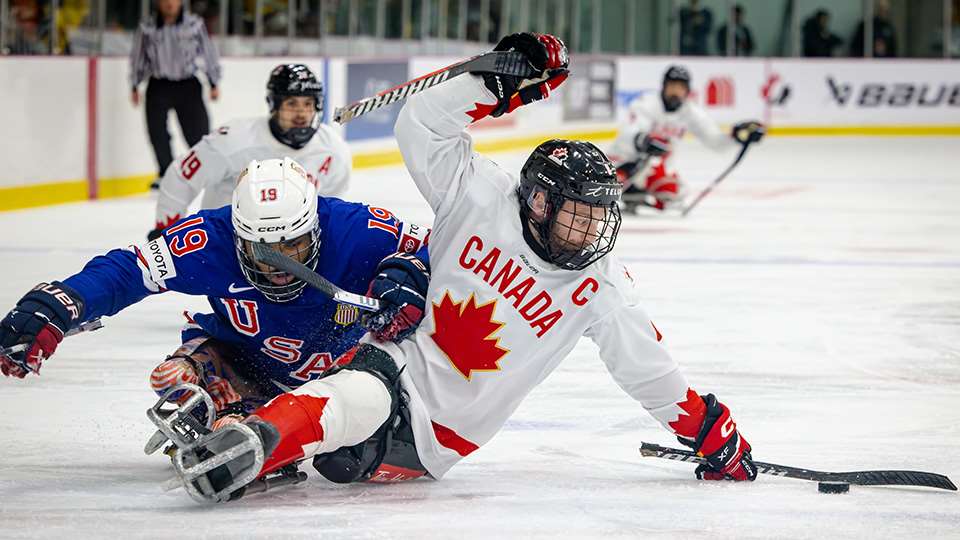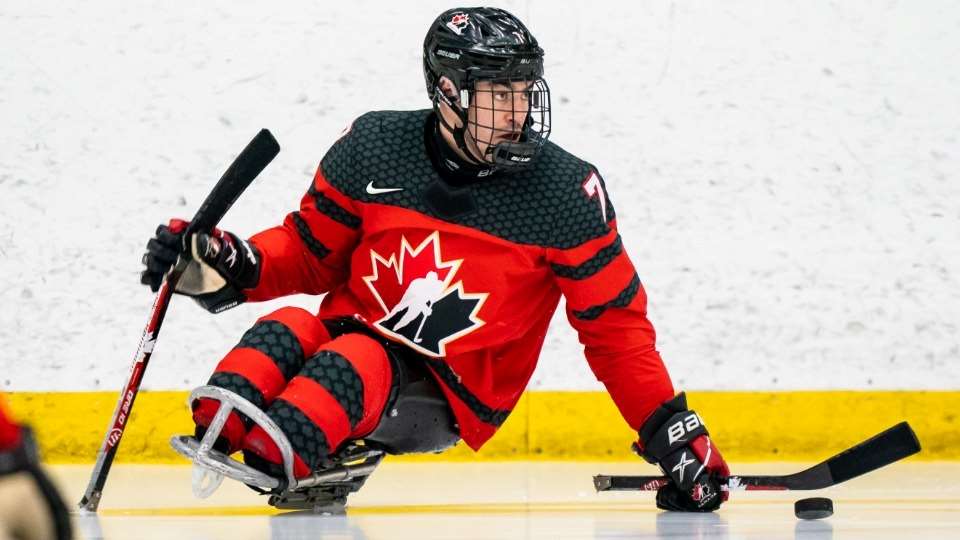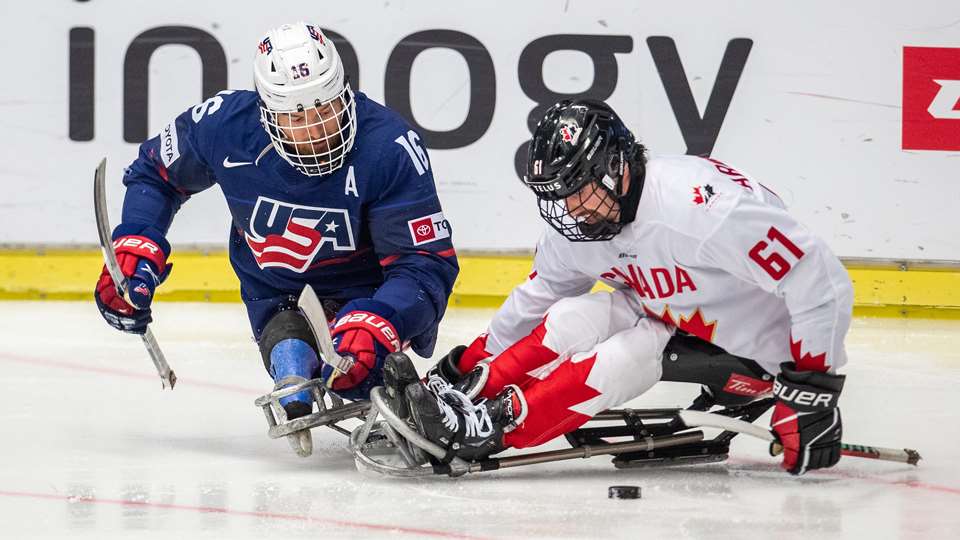
Schedule
Team Canada (Men)
IIHF World Junior Championship | Dec. 26, 2024-Jan. 5, 2025
Spengler Cup | Dec. 26-31, 2024
4 Nations Face-Off | Feb 12-20, 2025
IIHF U18 World Championship | April 23-May 3, 2025
IIHF World Championship | May 9-25, 2025
U17 World Challenge | Nov. 3-9, 2024
Hlinka Gretzky Cup | Aug. 5-10, 2024
Junior A World Challenge | Dec. 9-15, 2024
National Junior Team vs. USPORTS | Dec 12-13, 2024
Search

No sled? No problem!
Adam Kingsmill is seeing the game from a new angle at the NextGen Prospects Camp

Back in August the now 16-year-old goaltender from Smithers, B.C., tried out for the Cariboo Cougars of the British Columbia Major Midget League. Although he didn’t make the team, he left an impression – both there at the rink that weekend and one that would resonate months later one province over.
When Kingsmill was two years old he lost his right leg below the knee. He remembers learning to skate on his prosthetic leg on his family’s backyard rink when he was four years old. For the three seasons prior to this one, he played for the Smithers Storm rep teams.
Surgery to repair a meniscus tear in his left knee has limited his ice time this season. But those four days he spent at the Cougars tryout camp prior to going under the knife may have changed the game for the lifelong stand-up goaltender.
This week he’s trying sledge hockey for the first time, thanks to an unexpected invitation to Hockey Canada’s first-ever NextGen Prospects Camp.
“I’ve been interested in trying sledge hockey,” says Kingsmill, “but I’ve never really had the opportunity being from a really small town.” The Calgary-based coaches and managers with Canada’s National Sledge Team saw footage of Kingsmill from the Cougars’ camp. Already on the lookout for athletes who could be classified as sledge hockey players, they reached out.
“We phoned multiple towns looking for sleds to try out [at home], but no one really had anything,” says Kingsmill. “So I just watched numerous videos to see how these guys move and what they do. I just tried to prepare my shoulders and my triceps as well I could.”
Kingsmill is a true sledge rookie. His first camp practice on Thursday was literally his first time on the ice in a sled.
“Oh, it felt different,” says Kingsmill, laughing. “I was kind of shell-shocked. It’s the same angles, but the shots coming off these guys’ sticks are completely different from in [stand-up] hockey. They can come in and roof it just like that. It’s all pretty uncomfortable at the moment.”
For all the transferable skills – “The angles for sure, reflexes and knowing where to be, your spatial awareness,” he says – there are parts of the game that take some getting used to. For starters, Kingsmill is used to surveying the scene from above crossbar level. In sledge, sitting in a sled, he’s facing shots with his head in the middle of the net. And with sledge being an upper-body sport, he must resist his natural instincts and “not want to kick save or anything,” he says. “Sliding back and forth is tough right now. I’ll work on that for a while and get better and better every day.”
Kingsmill is amazed at how quickly he’s been embraced by the sledge community this week. He was outfitted with a sled and a pair of sticks by the sledge program, and other players have gone out of their way to make him feel comfortable. His intrasquad partner is Kevin Duchane, who’s spent time with Canada’s National Sledge Development Team in the past, and one of the on-ice instructors is Corbin Watson, a member of Canada’s National Sledge Team.
“Everything those guys said to me is incredible,” says Kingsmill. “Just little stuff, like moving my hand an inch up the stick to skate, how to shift my body weight and how to move my hips – everything. It’s a lot to take in.”
Kingsmill plans to continue his hand at being a stand-up goaltender, but a fire has now also been lit for the game of sledge. He hopes to get his own sled and keep developing back home.
“I love it,” he says. “Just already I can tell that I’m going to try and go as far as I can with this.”
For more information: |
- <
- >












































